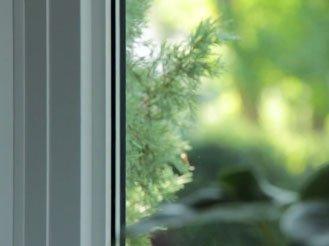Whether you are one of those homeowners that care for the environment, or you simply like the idea of saving as much on energy expenses as possible, it is difficult to argue the benefits of making your home more energy efficient.
In fact, efficiency should be very high on the list of your priorities when you’re starting a home renovation project.
What is LEED?
But how do you truly ensure that your home is becoming more efficient? In Canada, the LEED (Leadership In Energy and Environmental Design) rating system does just that. Recognized in over 160 countries, LEED Canada works closely with the Canadian Green Building Council to help new construction and renovation homes, as well as commercial buildings, put efficient products and materials in place. LEED also offers educational resources and acts as a third-party inspector to help home and business owners ensure their properties meet efficiency requirements.
Find out more about LEED for Homes on the Canada Green Building Council page.
What Are The Benefits of LEED For Homes?

A LEED certified home uses less energy, water, and resources. It also creates less waste. As a result, you can expect lower monthly costs on energy bills.
LEED homes are also much healthier. They reduce allergens and triggers for asthma and chemical sensitivity. That’s because these homes use non-toxic materials that lower risk of mold and mildew. The program also rewards the use of materials with less toxic glues and less toxic paints.
LEED homes are a lot more comfortable. Part of the implementation of LEED is designed to eliminate uncomfortable rooms by rewarding the proper balance of heating and cooling throughout the whole house.
How To Make Your Home More Energy Efficient
There are many ways you can make your home more efficient according to LEED, and not all of them require extensive or expensive renovations. Start out by changing your light bulbs to LEDs, using a low-flow showerhead, or setting your thermostat a couple of degrees lower.
LEED points out several suggestions for improving the efficiency of your home:
Whole House
- Insulate better. A home renovation is often a good chance to address the problem with insulation in your home. LEED recommends rock wool or cellulose insulation. Both contain recycled content, are made in Canada, and have the potential to reduce your monthly heating costs.
- Replace your furnace. You should consider getting a new furnace if yours is older than 15 years. For even heating, look for a condensing gas furnace with an efficiency of 95% or higher.
In the Bathroom
- Get a low-flow toilet. These toilets can reduce your water use up to 25% and can often be done by yourself, without the help of a professional.
- Install an efficient showerhead. Installing a low-flow (1.75 gallons-per-minute or less) showerhead can help save up to 30% on water and energy bills.
- Upgrade the bathroom ventilation. Most people turn off fans quickly because they are noisy. Installing a quiet, efficient fan can be less of a nuisance while helping circulate the air in your home. Remember, ducting is an important part of proper ventilation. Make sure ducts from your bathrooms go directly to the outside.
- Use the right materials for re-tiling. If you are doing tile around your bathtub, using a nonpaper-faced drywall is a great way to reduce moisture. Doing so greatly reduces the chance of mold and will have better performance than green board or standard drywall.
In the Kitchen
- Start with the right appliances. Your old appliances can often be recycled or donated. When buying new appliances, consider getting ones that are ENERGY STAR rated. Stoves, fridges, and dishwashers all come in a range of energy ratings.
- Get the right cabinetry. If you are having cabinetry made select material that is urea-formaldehyde free. For counter tops look for laminates that are GREENGUARD Certified. You can also consider butcher block wood countertops, paper, or stone counter tops.
- Don’t overlook the floors. LEED suggests using Marmoleum as a modern low-maintenance alternative to vinyl floors in kitchens.
LEED and replacement windows
LEED also doesn’t overlook windows in their recommendations. Windows play a crucial role in preventing heat loss from your home. But modern windows can also harness the power of the sun to warm certain rooms in your home.
For best efficiency, LEED suggests getting windows that are rated for Climate Zones 2 and 3, the coldest climate zones in Canada. For example, windows in Calgary, Edmonton, Winnipeg, Regina, and Saskatoon have to qualify only for zone 2 to be considered efficient.
The window type you buy also matters. Casement and awning windows are much more efficient and durable than sliding and hung windows. Although these crank windows cost more from the outset, they are supposed to be more efficient and serve longer than their sliding counterparts.
Learn everything you need to know about replacement windows:
Find out how much a new window project should cost
See our full line of replacement vinyl window styles
Find out about Ecoline Windows warranty and installation service

